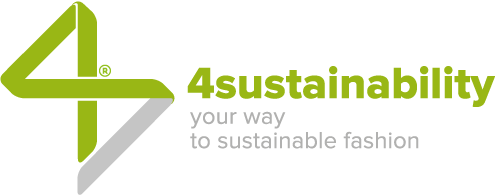We often hear SDGs mentioned, but do we really know what they are? SDG stands for Sustainable Development Goal. The Sustainable Development Goals, which were defined in 2015 by the governments of the 193 member states of the UN, balance the three dimensions of sustainable development: economic, social and environmental. The SDGs form part of the Agenda 2030, the action programme for sustainable development that was set up to encourage projects in areas of crucial importance for humanity: People, Planet, Prosperity, Peace, Partnership.
People: The shared undertaking is to bring an end to poverty and hunger, in all their forms and dimensions, and to ensure that all human beings can fulfil their potential in dignity and equality and in a healthy environment.
Planet: The aim is to protect the planet from degradation through sustainable consumption and production, sustainably managing its natural resources and taking urgent action on climate change, so that it can support the needs of the present and future generations.
Prosperity: The final aim is to ensure that all human beings can enjoy prosperous and fulfilling lives and that economic, social and technological progress occurs in harmony with nature.
Peace: The common aim in this case is to foster peaceful, just and inclusive societies which are free from fear and violence.
Partnership: The commitment consists of mobilising the means required to implement this Agenda through a revitalised Global Partnership for Sustainable Development, based on a spirit of strengthened global solidarity, focussed in particular on the needs of the poorest and most vulnerable.
HOW MANY GOALS ARE THERE, AND WHAT ARE THEY SPECIFICALLY?
There are 17 so-called Sustainable Goals, which in turn are defined in a list of 169 targets. These are significant figures that stress the importance and scope of Agenda 2030
Goal 1. End poverty in all its forms everywhere
Goal 2. End hunger, achieve food security and improved nutrition and promote sustainable agriculture
Goal 3. Ensure healthy lives and promote well-being for all at all ages
Goal 4. Ensure inclusive and equitable quality education and promote lifelong learning opportunities for all
Goal 5. Achieve gender equality and empower all women and girls
Goal 6. Ensure availability and sustainable management of water and sanitation for all
Goal 7. Ensure access to affordable, reliable, sustainable and modern energy for all
Goal 8. Promote sustained, inclusive and sustainable economic growth, full and productive employment and decent work for all
Goal 9. Build resilient infrastructure, promote inclusive and sustainable industrialization, and foster innovation
Goal 10. Reduce income inequality within and among countries
Goal 11. Make cities and human settlements inclusive, safe, resilient, and sustainable
Goal 12. Ensure sustainable consumption and production patterns
Goal 13. Promote urgent action on all levels to combat climate change
Goal 14. Conserve and sustainably use the oceans, seas and marine resources for sustainable development
Goal 15. Protect, restore and promote sustainable use of terrestrial ecosystems
Goal 16. Promote peaceful and inclusive societies for sustainable development
Goal 17. Strengthen the means of implementation and revitalize the global partnership for sustainable development
WHY IS THE AGENDA 2030 SO IMPORTANT?
Right now there are billions of people living in conditions of absolute poverty. Inequality is increasing both between countries and within individual countries. Gender inequality continues to be a fundamental challenge. Unemployment, particularly among younger generations, is a priority.
Global threats to health, ever-more frequent and violent natural disaster, the rapid increase in conflict and terrorism threaten to compromise the progress achieved in recent decades.
Climate change is one of the greatest challenges of our age, and its negative impact is compromising the ability of countries to create sustainable development. The increase in global temperature, the rising of sea levels, ocean acidification and the other effects of climate change are seriously threatening coastal areas and underwater environments.
However, ours is also an era characterised by great opportunity. Significant progress has been made in terms of development. In the last few decades, tens of thousands of people have escaped extreme poverty. Access to education has increased for both boys and girls. The spreading of methods of communication e and mass information, and global interconnectivity, as well as technological and scientific discoveries, are now allowing for an acceleration in the progress of humankind, bridging the digital divide and favouring the development of society based on knowledge.
WHAT DO THE ITALIANS THINK OF THE SDGs?
According to a survey carried out at the beginning of 2019 by the Unipolis Foundation, 80% of Italians would like politics to be based on sustainability. In particular:
- 6% of those interviewed claim to be in favour of the creation of policies for sustainable development
- 1% claim to be highly in favour
- 9% claim to be against or very much against
- 5% don’t know or didn’t answer.
In the 14 to 15 age range, the percentage of those in favour goes as high as 91.6%, compared to 75.3% for the over-65s, which is still a positive figure. Among those with a higher education qualification, the percentage of those in favour is over 90. What emerges is a trend in which the higher the level of information, education and curiosity – the latter being typical of younger generations – the higher the openness to the principles of sustainable development.

